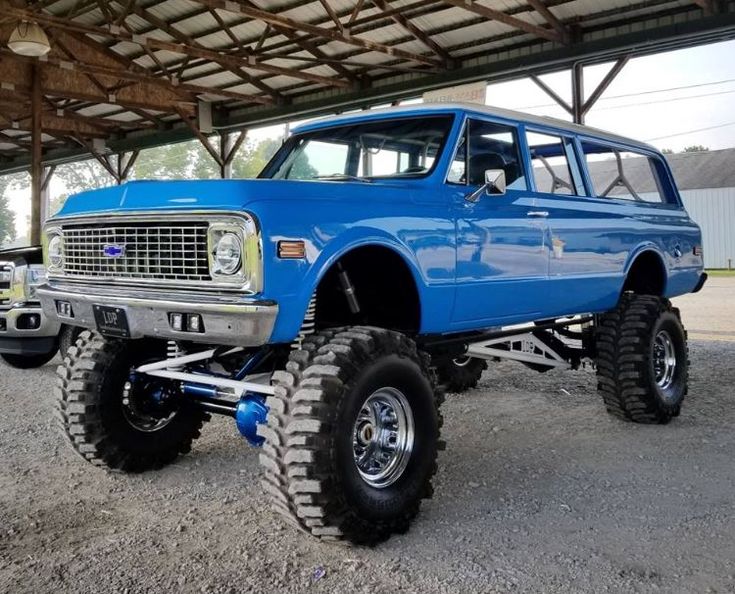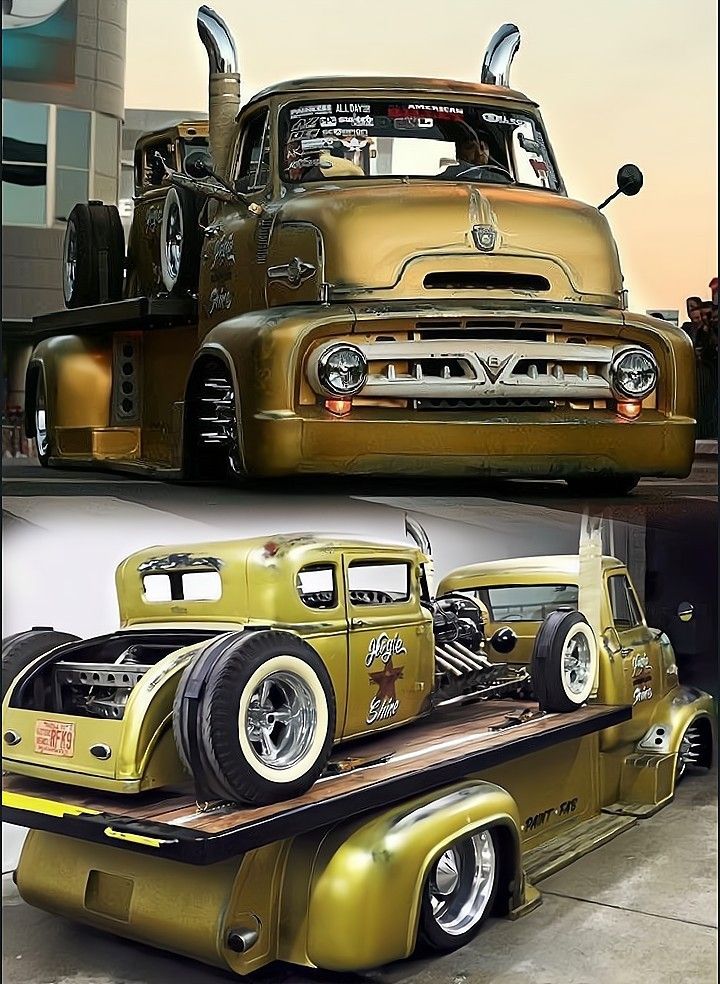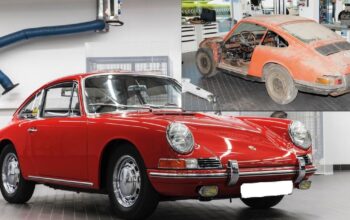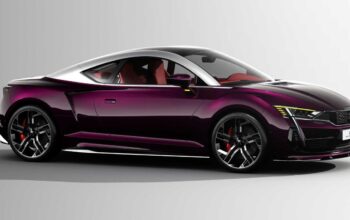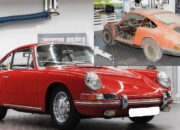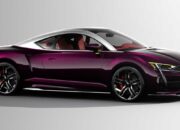In an increasingly standardized world, the desire for individuality burns brighter than ever. This profound human need extends powerfully into our personal possessions, especially our vehicles. Far beyond mere transportation, a car, truck, or motorcycle often serves as an extension of our personality, a canvas for self-expression. The automotive landscape is currently experiencing an unprecedented surge in customization trends, allowing enthusiasts and everyday drivers alike to transform their rides from mass-produced models into unique reflections of their taste, lifestyle, and aspirations. This article delves deep into the fascinating world of vehicle personalization, exploring the driving forces behind this boom, the most prominent and innovative trends, the technological advancements enabling new levels of bespoke touches, and the economic impact of this vibrant aftermarket industry.
The Enduring Allure of Personalization
The impulse to personalize a vehicle is not new. From the early days of motoring, owners have sought to differentiate their machines, whether through hand-painted details, unique accessories, or performance modifications. However, what was once largely the domain of dedicated hobbyists and gearheads has now gone mainstream, driven by several powerful factors:
A. The Quest for Uniqueness
In an era of mass production, where millions of identical vehicles roll off assembly lines annually, the desire to stand out is paramount. Owning a vehicle that looks, feels, and performs exactly like countless others can diminish the sense of ownership and personal connection. Customization offers a powerful antidote, transforming a generic model into a one-of-a-kind statement that reflects the owner’s distinct identity. This quest for uniqueness fuels creativity and innovation within the aftermarket industry, pushing boundaries in design and engineering.
B. Enhanced Performance and Driving Experience
Beyond aesthetics, many customization trends are rooted in the pursuit of improved performance, handling, and overall driving enjoyment. Whether it’s optimizing engine output, upgrading suspension for better road feel, or enhancing braking capabilities, modifications can fundamentally alter a vehicle’s dynamic characteristics. This allows owners to tailor their ride not just for looks, but for a driving experience precisely matched to their preferences, whether that’s track performance, off-road capability, or refined daily commuting.
C. Reflecting Lifestyle and Hobbies
Our vehicles often play an integral role in our lifestyles and hobbies. For outdoor adventurers, modifications like roof racks, specialized tires, and off-road suspension are essential. For audiophiles, an upgraded sound system transforms the commute. For those with a passion for classic cars, restoration projects are a labor of love that preserves history. Customization allows vehicles to become more functional and aligned with specific interests, making them truly fit for purpose and enhancing the overall enjoyment of these pursuits.
D. Community and Culture
Vehicle customization fosters vibrant communities. Car clubs, online forums, social media groups, and organized events (like car shows and meets) bring together individuals who share a passion for modifying their rides. This sense of belonging, the exchange of ideas, and the friendly competition of showcasing unique builds are powerful motivators. It’s a culture built on creativity, craftsmanship, and shared enthusiasm, where trends are born and celebrated.
E. Technological Accessibility
Advances in manufacturing, materials science, and digital design have made customization more accessible than ever. From 3D printing custom parts to sophisticated computer-aided design (CAD) software, technology empowers both professional customizers and DIY enthusiasts. Furthermore, the internet and social media have democratized information, making it easier for individuals to research options, find reputable installers, and even learn to perform modifications themselves.
Dominant Customization Trends Sweeping the Automotive World
The breadth of vehicle customization is vast, encompassing everything from subtle aesthetic tweaks to radical overhauls. Here are some of the most prominent trends defining the current landscape:
A. Exterior Visual Transformations
The visual impact of a vehicle is often the first and most striking aspect of customization. These trends focus on altering the aesthetic appeal:
- Vehicle Wraps and Paint Finishes:
- Vinyl Wraps: Offering an incredibly versatile and reversible way to change a vehicle’s color, finish (matte, satin, chrome, textured), or even add intricate graphics. Wraps protect the original paint and can be removed without damage, making them popular for both personal expression and commercial branding. They are significantly less expensive than a full respray and offer a vast palette of options.
- Custom Paint Jobs: For those seeking a permanent and often higher-end solution, bespoke paint jobs, including multi-stage paints, candy colors, chameleon effects, and intricate airbrushing, continue to be a hallmark of high-level customization.
- Wheel and Tire Upgrades:
- Aftermarket Wheels: A classic and highly impactful modification. Options range from lightweight forged wheels for performance, larger diameters for visual presence, intricate spoke designs, and various finishes (black, chrome, bronze, custom painted). The right wheels can dramatically alter a vehicle’s stance and character.
- Performance Tires: Beyond aesthetics, tires are crucial for handling and safety. Upgrading to high-performance tires, all-terrain tires, or specialized compounds can significantly improve grip, braking, and ride quality depending on the intended use.
- Aerodynamic Kits and Body Modifications:
- Body Kits: Including front splitters, side skirts, rear diffusers, and spoilers, these kits can enhance a vehicle’s aggressive look and, in some cases, improve aerodynamic efficiency.
- Widebody Kits: A bold statement, these kits involve widening the fenders to accommodate wider wheels and tires, creating a more muscular and aggressive stance.
- Custom Bumpers and Grilles: Replacing factory components with aftermarket designs to achieve a more unique or aggressive front and rear fascia.
- Lighting Enhancements:
- LED Conversions: Upgrading traditional halogen lights to brighter, more energy-efficient LED headlights, taillights, and interior lighting.
- Custom DRLs (Daytime Running Lights): Adding unique LED patterns or “angel eyes” to create a distinctive front-end signature.
- Underglow and Interior Accent Lighting: Incorporating customizable RGB LED lighting for aesthetic flair, often controlled via smartphone apps.
B. Interior Comfort and Tech Upgrades
The interior is where drivers and passengers spend most of their time, making it a prime area for personalization focused on comfort, luxury, and technology:
- Infotainment System Overhauls:
- Larger Touchscreens: Replacing smaller factory screens with larger, higher-resolution aftermarket units offering more advanced features.
- Premium Audio Systems: Installing upgraded speakers, subwoofers, amplifiers, and digital sound processors for a superior audio experience.
- Integrated Smart Features: Adding features like built-in navigation with real-time traffic, dash cams, and even integrated gaming consoles for rear passengers.
- Seating and Upholstery Refinements:
- Custom Leather or Fabric Upholstery: Re-trimming seats, door panels, and dashboards in premium materials like Nappa leather, Alcantara, or bespoke fabrics with custom stitching patterns.
- Performance Seats: Installing aftermarket racing seats or ergonomic performance seats that offer better bolstering and support.
- Heated/Cooled Seat Integration: Adding comfort features not available in the factory trim.
- Interior Trim and Accents:
- Carbon Fiber or Wood Grain Trim: Replacing plastic interior panels with high-quality carbon fiber, real wood, or brushed aluminum accents.
- Custom Steering Wheels: Upgrading to a sportier, ergonomic, or bespoke steering wheel, often with custom materials and stitching.
- Personalized Floor Mats and Pedals: Smaller touches that contribute to a cohesive custom interior theme.
- Ambient Lighting Systems:
- Programmable LED Strips: Integrating subtle, customizable LED lighting into door panels, footwells, and dashboards, often with multi-color options and dynamic effects. These systems can create a luxury ambiance and are typically controlled via smartphone apps.
C. Performance and Powertrain Modifications
For many enthusiasts, customization is fundamentally about enhancing what’s under the hood and beneath the chassis. These modifications directly impact driving dynamics:
- Engine Tuning and ECU Remapping:
- Performance Tunes: Re-calibrating the engine’s Electronic Control Unit (ECU) to optimize fuel delivery, ignition timing, and boost pressure (for turbocharged engines), resulting in significant increases in horsepower and torque.
- Piggyback Modules: External modules that modify sensor signals to trick the ECU, offering less intrusive power gains than full remapping.
- Exhaust System Upgrades:
- Aftermarket Exhausts: Replacing restrictive factory exhaust systems with performance-oriented components (headers, downpipes, cat-back systems) to improve exhaust flow, enhance engine sound, and slightly boost power. Options range from subtle improvements to aggressive, race-inspired sounds.
- Suspension and Handling Improvements:
- Coilovers: Adjustable suspension systems that allow for precise control over ride height, damping, and rebound, enabling owners to fine-tune handling for track use or desired stance.
- Lowering Springs: A simpler way to reduce ride height for a sportier look and improved center of gravity.
- Anti-Roll Bars (Sway Bars): Stiffer bars reduce body roll during cornering, improving responsiveness and handling.
- Air Suspension (Air Ride): Allows for on-the-fly adjustment of ride height, often used for dramatic lowering at car shows or raising for obstacle clearance.
- Brake System Enhancements:
- Big Brake Kits (BBK): Upgrading to larger calipers, rotors, and performance brake pads for superior stopping power and heat dissipation, crucial for high-performance driving.
- Braided Brake Lines: Replacing rubber lines with braided stainless steel lines for a firmer, more consistent pedal feel.
- Forced Induction (Turbochargers/Superchargers):
- Adding Boost: For naturally aspirated engines, installing a turbocharger or supercharger kit can dramatically increase power output, though it’s a more complex and costly modification.
D. Off-Road and Adventure Modifications
The booming popularity of SUVs and trucks has fueled a robust market for off-road and adventure-oriented customization:
- Lift Kits: Raising the vehicle’s ride height to increase ground clearance for traversing rough terrain and accommodating larger off-road tires.
- Off-Road Tires and Wheels: Aggressive tread patterns and robust wheels designed for maximum traction on dirt, rocks, mud, and sand.
- Protective Armor: Skid plates, rock sliders, and reinforced bumpers to protect critical underbody components from damage during off-road excursions.
- Winches and Recovery Gear: Essential equipment for self-recovery or assisting other vehicles in challenging off-road situations.
- Roof Racks and Cargo Solutions: Heavy-duty roof racks, cargo boxes, and mounting solutions for carrying camping gear, mountain bikes, kayaks, and other adventure equipment.
- Auxiliary Lighting: High-powered LED light bars, spot lights, and fog lights for improved visibility in remote or low-light conditions.
The Role of Technology in Modern Customization
Beyond simply enabling new options, technology is fundamentally reshaping how vehicle customization is approached, planned, and executed.
A. 3D Printing and Rapid Prototyping
3D printing has revolutionized the creation of custom parts, particularly for unique or low-volume components. Customizers can now:
- Create Bespoke Interior/Exterior Pieces: Design and print unique trim pieces, dashboard components, vent surrounds, or even aerodynamic elements tailored specifically to a vehicle.
- Fabricate Prototypes: Rapidly prototype designs before committing to expensive traditional manufacturing methods.
- Reproduce Obscure Parts: For classic car restorations, 3D scanning and printing can recreate rare or discontinued components.
This technology empowers unprecedented levels of personalization and accelerates the design-to-production cycle.
B. Virtual Reality (VR) and Augmented Reality (AR)
VR and AR tools are increasingly being used to visualize customizations before they are physically implemented:
- Virtual Car Configurator: Online tools and apps allow users to “build” their dream car virtually, experimenting with different colors, wheels, body kits, and interior options in a realistic 3D environment.
- AR Overlay: Using a smartphone or tablet camera, users can “see” how a specific wheel design or body kit would look on their actual car in real-time.
- Design and Simulation: Professional customizers use VR to walk through virtual models of their designs, identifying potential issues or refining aesthetics before any physical work begins.
These technologies reduce risk, save time, and enhance the customer experience by providing a clear visualization of the final product.
C. Digital Design and CNC Machining
Computer-Aided Design (CAD) software is now standard for designing custom components, ensuring precision and fit. This digital blueprint can then be fed into Computer Numerical Control (CNC) machines:
- Precision Manufacturing: CNC mills, lathes, and routers can precisely cut metals, plastics, and composites to exact specifications, creating flawless custom parts from wheels to engine components.
- Replicability: Once a design is perfected, it can be replicated consistently, allowing for batch production of specialized aftermarket parts.
This combination of digital design and automated manufacturing elevates the quality and complexity of available custom parts.
D. Social Media and Influencer Culture
Platforms like Instagram, YouTube, and TikTok have become powerful incubators and accelerators of customization trends:
- Showcasing Builds: Enthusiasts and professional shops use these platforms to showcase their latest builds, inspiring others and setting new trends.
- DIY Tutorials: Content creators share step-by-step guides, making complex modifications seem more accessible to a broader audience.
- Community Building: Hashtags and groups allow like-minded individuals to connect, share knowledge, and collectively push the boundaries of customization.
- Brand Promotion: Aftermarket companies leverage influencers to promote their products and tap into engaged communities.
Social media has democratized customization, spreading ideas and techniques globally at an unprecedented pace.
The Economic Landscape of Customization
The vehicle customization market is a colossal industry, representing a significant portion of the global automotive aftermarket. Its economic impact is felt across various sectors:
A. Aftermarket Parts Manufacturing
Thousands of companies worldwide specialize in designing, manufacturing, and distributing aftermarket parts. This includes everything from small, independent fabricators to large, publicly traded corporations. This segment constantly innovates to meet evolving consumer demands and trends, investing heavily in research and development.
B. Installation and Service Businesses
A vast network of specialized shops and independent mechanics provides installation services for custom parts. This ranges from tire and wheel shops to performance tuning centers, body shops, and even bespoke luxury customizers. These businesses often employ highly skilled technicians and craftsmen, contributing significantly to local economies.
C. Retail and E-commerce
The rise of e-commerce has made custom parts more accessible than ever. Online retailers, direct-to-consumer brands, and digital marketplaces connect buyers with a massive selection of components. This global reach has fueled competition and driven innovation, offering consumers more choices and competitive pricing.
D. Events and Media
Car shows, expos, rallies, and motorsport events are major economic drivers, attracting millions of attendees globally. These events serve as platforms for showcasing custom builds, launching new products, and fostering community. Automotive media, both print and digital, also thrives on covering customization trends, driving advertising revenue and content creation.
E. Global Market Growth
The customization market is not limited to traditional automotive strongholds. As disposable incomes rise in emerging economies, the desire for personalized vehicles is growing rapidly, opening up new markets for aftermarket products and services. This global expansion ensures the continued robust growth of the industry.
Challenges and Considerations in Customization
While the world of vehicle customization offers immense possibilities, it also comes with its share of challenges and important considerations for enthusiasts:
A. Regulatory Compliance and Legality
One of the most significant challenges is navigating the complex web of regulations. Modifications, particularly to emissions systems, lighting, and vehicle height, can run afoul of local, regional, or national laws. It’s crucial for owners to research and understand the legal implications of their intended modifications to avoid fines, vehicle impoundment, or issues with vehicle registration and inspection.
B. Insurance Implications
Major modifications can affect a vehicle’s insurance policy. Insurers may classify heavily modified vehicles differently, leading to higher premiums or even refusal of coverage if modifications are not disclosed. It’s essential to inform your insurance provider about any significant changes to ensure proper coverage in case of an accident or theft.
C. Warranty Voiding
Modifying certain components of a new vehicle can void the manufacturer’s warranty on related parts. For example, an engine tune might void the powertrain warranty. Owners must carefully weigh the desire for customization against potential warranty implications. Reputable aftermarket parts often come with their own warranties, but they may not cover damage to factory components.
D. Quality and Safety of Aftermarket Parts
The quality of aftermarket parts can vary wildly. While many reputable manufacturers produce high-quality, tested components, the market also contains inferior or counterfeit parts. Using substandard parts can compromise vehicle safety, performance, and reliability. Researching brands, reading reviews, and purchasing from trusted suppliers are critical.
E. Resale Value
While customization makes a vehicle unique, it can sometimes negatively impact its resale value. Highly personalized modifications might not appeal to a broad market, limiting potential buyers. Conversely, certain performance or aesthetic upgrades from reputable brands can sometimes enhance value, especially within enthusiast communities. It’s a balance that owners should consider if resale is a concern.
Conclusion
The “Customization Trends For Your Ride” narrative is a testament to the enduring human desire for individuality and expression. Far from being a fleeting fad, the personalization of vehicles has become a deeply ingrained and rapidly evolving aspect of automotive culture. From striking exterior transformations and luxurious interior enhancements to sophisticated performance upgrades and rugged off-road conversions, the options for tailoring a vehicle are virtually limitless.
Fueled by technological advancements like 3D printing, virtual visualization, and digital manufacturing, and amplified by the global reach of social media, customization is more accessible, diverse, and innovative than ever before. This vibrant ecosystem supports a massive aftermarket industry, creating jobs and driving economic activity worldwide. As vehicle platforms become more modular and integrated with digital systems, the opportunities for personalized experiences, both aesthetic and functional, will only expand.
Ultimately, a customized ride is more than just a car; it’s a statement, a passion project, and a unique extension of its owner’s identity. In a world increasingly defined by mass consumerism, the ability to sculpt one’s personal mode of transport into a distinctive masterpiece ensures that the bond between human and machine remains as dynamic and personal as ever. The road ahead for vehicle customization is exciting, promising an even greater degree of individuality and creativity for every driver.

